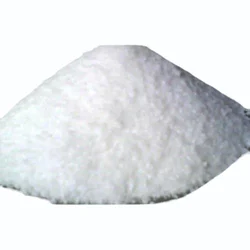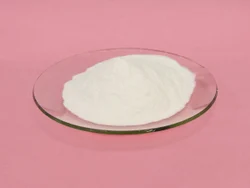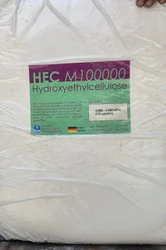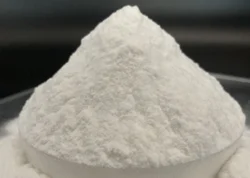Hydroxyethyl Cellulose
Synonym(s):‘Cellosize QP-40’;Hydroxyethylcellulose
- CAS NO.:9004-62-0
- Empirical Formula: C29H52O21
- Molecular Weight: 0
- MDL number: MFCD00072770
- EINECS: 618-387-5
- SAFETY DATA SHEET (SDS)
- Update Date: 2025-12-17 09:49:58
What is Hydroxyethyl Cellulose?
Toxicity
May cause chemical pneumonitis in case of inhalation and skin irritation. Animal data suggests potential alteration in female fertility.
Description
Hetastarch, another nonproteinaceous colloid, is a complex mixture of ethoxylated amylopectins
ranging in molecular weight from 10 to 1,000 kDa (average molecular weight, ~450 kDa). When
infused as a 6% solution, hetastarch approximates the activity of human albumin. The larger
molecular weights, however, increase its intravascular residence time as well as its plasma
expansion effects relative to albumin.
Hetastarch is synthetically produced, so it is degraded more
slowly and is less antigenic than other colloids. Despite these advantages, hetastarch is quite
expensive and also has no oxygen-carrying capacity.
Chemical properties
light yellow powder
Chemical properties
Hydroxyethyl cellulose occurs as a white, yellowish-white or grayish-white, odorless and tasteless, hygroscopic powder.
Characteristics
Hydroxyethyl cellulose is soluble in hot or cold water, and does not precipitate at high temperature or boiling, so it has a wide range of solubility and viscosity characteristics, as well as non-thermal gelling properties. Hydroxyethyl cellulose is a non-ionic polymer material , can coexist with a wide range of other water-soluble polymers, surfactants, and salts, and is an excellent colloidal thickener for high-concentration dielectric solutions. The water retention capacity of hydroxyethyl cellulose is twice that of methyl cellulose, and it has better flow regulation; the dispersing ability of hydroxyethyl cellulose is comparable to that of methyl cellulose and hydroxypropyl methyl cellulose The specific dispersing ability is the worst, but the protective colloid ability is the strongest.
The Uses of Hydroxyethyl Cellulose
hydroxyethyl cellulose is a thickener, protective colloid, binder, stabilizer, and suspending agent. It is obtained from wood pulp Copyright 2014 Cengage Learning. All Rights Reserved. May not be copied, scanned, or duplicated, in whole or in part. Due to electronic rights, some third party content may be suppressed from the eBook and/or eChapter(s). Editorial Review has deemed that any suppressed content does not materially affect the overall learning experience. Cengage Learning reserves the right to remove additional content at any time if subsequent rights restrictions require it. or chemical cotton by treatment with an alkali.
The Uses of Hydroxyethyl Cellulose
disintegrant, binder for tabletting
The Uses of Hydroxyethyl Cellulose
Thickener, protective colloid, binder, stabilizer and suspending agent.
Background
Hydroxyethyl cellulose is a polysaccharide derivative with gel thickening, emulsifying, bubble-forming, water-retaining and stabilizing properties. It is used as a key ingredient in many household cleaning products, lubricants and cosmetics due to its non-ionic and water-soluble nature. It is often used as an ingredient in ophthalmic pharmaceutical preparations such as artificial tear solutions and adjunct agent in topical drug formulations to facilitate the delivery of drugs with hydrophobic character.
What are the applications of Application
Hydroxyethyl-cellulose is A network-forming polymer in capillary electrophoresis of DNA restriction fragments.
Indications
For alleviating surface irritation in topical ocular administrations, such as artificial tear solutions. Hydroxyethyl cellulose is also found in topical formulations to aid in more efficient drug diffusion across the membranes.
Definition
A starch derivative containing 90% amylopectin.
Production Methods
A purified form of cellulose is reacted with sodium hydroxide to
produce a swollen alkali cellulose, which is chemically more reactive
than untreated cellulose. The alkali cellulose is then reacted with
ethylene oxide to produce a series of hydroxyethyl cellulose ethers.
The manner in which ethylene oxide is added to cellulose can be
described by two terms, the degree of substitution (DS) and the
molar substitution (MS). The DS designates the average number of
hydroxyl positions on the anhydroglucose unit that have been
reacted with ethylene oxide. Since each anhydroglucose unit of the
cellulose molecule has three hydroxyl groups, the maximum value
for DS is 3. MS is defined as the average number of ethylene oxide
molecules that have reacted with each anhydroglucose unit. Once a
hydroxyethyl group is attached to each unit, it can further react
with additional groups in an end-to-end formation. This reaction
can continue and there is no theoretical limit for MS.
Preparation
Hydroxyethylcellulose is prepared from alkali cellulose and ethylene oxide. It may be noted that the hydroxyethyl group itself can react with ethylene oxide so that side-chains of varying length may be present in the product. Commercial materials generally contain between 1.4 and 2.0 ethylene oxide residues per glucose residue and have a degree of substitution of about 0.8-1.0.
brand name
Hespan (DuPont Merck) .
General Description
Non-ionic water soluble polymer. Aqueous solutions are pseudoplastic. Readily disperses without lumping.
Pharmaceutical Applications
Hydroxyethyl cellulose is a nonionic, water-soluble polymer widely
used in pharmaceutical formulations. It is primarily used as a
thickening agent in ophthalmic and topical formulations,
although it is also used as a binder and film-coating agent for
tablets.It is present in lubricant preparations for dry eye, contact
lens care, and dry mouth.
The concentration of hydroxyethyl cellulose used in a formulation
is dependent upon the solvent and the molecular weight of the
grade.
Hydroxyethyl cellulose is also widely used in cosmetics.
Pharmacokinetics
Hydroxyethyl cellulose acts as a demulcent by relieving inflammation or irritation and dryness of eyes. It acts as one of the key ingredient and viscosity-enhancing agent to prolong corneal contact time and increase intraocular drug levels .
Toxicology
Considered to be non toxic. Use as a food additive indicates good tolerance of small amounts, but excessive amounts or overuse may bring irritant and /or harmful effects. Polysaccharides are not substantially absorbed from the gastrointestinal tract but may produce a laxative effect.
Safety
Hydroxyethyl cellulose is primarily used in ophthalmic and topical
pharmaceutical formulations. It is generally regarded as an
essentially nontoxic and nonirritant material.
Acute and subacute oral toxicity studies in rats have shown no
toxic effects attributable to hydroxyethyl cellulose consumption, the
hydroxyethyl cellulose being neither absorbed nor hydrolyzed in the
rat gastrointestinal tract. However, although used in oral pharmaceutical
formulations, hydroxyethyl cellulose has not been
approved for direct use in food products.
Glyoxal-treated hydroxyethyl cellulose is not recommended for
use in oral pharmaceutical formulations or topical preparations that
may be used on mucous membranes. Hydroxyethyl cellulose is also
not recommended for use in parenteral products.
Metabolism
Not Available
Storage
Hydroxyethyl cellulose powder is a stable though hygroscopic
material.
Aqueous solutions of hydroxyethyl cellulose are relatively stable
at pH 2–12 with the viscosity of solutions being largely unaffected.
However, solutions are less stable below pH 5 owing to hydrolysis.
At high pH, oxidation may occur.
Increasing the temperature reduces the viscosity of aqueous
hydroxyethyl cellulose solutions. However, on cooling, the original
viscosity is restored. Solutions may be subjected to freeze–thawing,
high-temperature storage, or boiling without precipitation or
gelation occurring.
Hydroxyethyl cellulose is subject to enzymatic degradation, with
consequent loss in viscosity of its solutions. Enzymes that catalyze
this degradation are produced by many bacteria and fungi present
in the environment. For prolonged storage, an antimicrobial
preservative should therefore be added to aqueous solutions.
Aqueous solutions of hydroxyethyl cellulose may also be sterilized
by autoclaving.
Hydroxyethyl cellulose powder should be stored in a well-closed
container, in a cool, dry place.
Properties and Applications
|
Index |
Results |
|
Appearance |
White powder |
|
Viscosity(mPa.s) 2% at 20℃,Brookfield 20rpm sp.5 cps |
15,000-25,000 |
|
Particle size 80 mesh (180um) % |
95.0 min |
|
M.S.(Molar substitution degree) % |
2.0-2.5 |
|
Moisture % |
≤6.0 |
|
Water insoluble % |
≤0.5 |
|
pH |
5.5-7.0 |
|
Ash Content % |
≤5.0 |
|
Bulk density g/L |
420-500 |
Incompatibilities
Hydroxyethyl cellulose is insoluble in most organic solvents. It is
incompatible with zein and partially compatible with the following
water-soluble compounds: casein; gelatin; methylcellulose; polyvinyl
alcohol, and starch.
Hydroxyethyl cellulose can be used with a wide variety of watersoluble
antimicrobial preservatives. However, sodium pentachlorophenate
produces an immediate increase in viscosity when added
to hydroxyethyl cellulose solutions.
Hydroxyethyl cellulose has good tolerance for dissolved
electrolytes, although it may be salted out of solution when mixed
with certain salt solutions. For example, the following salt solutions
will precipitate a 10% w/v solution of Cellosize WP-09 and a 2%
w/v solution of Cellosize WP-4400: sodium carbonate 50% and
saturated solutions of aluminum sulfate; ammonium sulfate;
chromic sulfate; disodium phosphate; magnesium sulfate; potassium
ferrocyanide; sodium sulfate; sodium sulfite; sodium thiosulfate;
and zinc sulfate.
Natrosol is soluble in most 10% salt solutions, excluding sodium
carbonate and sodium sulfate, and many 50% salt solutions with
the exception of the following: aluminum sulfate; ammonium
sulfate; diammonium phosphate; disodium phosphate; ferric
chloride; magnesium sulfate; potassium ferrocyanide; sodium
metaborate; sodium nitrate; sodium sulfite; trisodium phosphate;
and zinc sulfate. Natrosol 150 is generally more tolerant of
dissolved salts than is Natrosol 250.
Hydroxyethyl cellulose is also incompatible with certain
fluorescent dyes or optical brighteners, and certain quaternary
disinfectants which will increase the viscosity of aqueous solutions.
Regulatory Status
Included in the FDA Inactive Ingredients Database (ophthalmic
preparations; oral syrups and tablets; otic and topical preparations).
Included in nonparenteral medicines licensed in the UK. Included in
the Canadian List of Acceptable Non-medicinal Ingredients.
Hydroxyethyl cellulose is not currently approved for use in food
products in Europe or the USA, although it is permitted for use in
indirect applications such as packaging. This restriction is due to the
high levels of ethylene glycol residues that are formed during the
manufacturing process.
Properties of Hydroxyethyl Cellulose
| Melting point: | 288-290 °C (dec.) |
| Density | 0.75 g/mL at 25 °C(lit.) |
| storage temp. | 2-8°C |
| solubility | H2O: ≤5 wt. % at 20 °C |
| form | powder |
| color | Light brown powder |
| Odor | Odorless |
| PH | pH(20g/l,25℃) : 5.0~8.0 |
| Water Solubility | almost transparency |
| Merck | 14,4673 |
| Stability: | Stable. Incompatible with strong oxidizing agents, acid chlorides, acid anhydrides |
| CAS DataBase Reference | 9004-62-0(CAS DataBase Reference) |
| EPA Substance Registry System | 2-Hydroxyethyl cellulose (9004-62-0) |
Safety information for Hydroxyethyl Cellulose
Computed Descriptors for Hydroxyethyl Cellulose
| InChIKey | CWSZBVAUYPTXTG-UHFFFAOYSA-N |
| SMILES | O1C(CO)C(OC2C(O)C(O)C(OC3C(OCCO)C(O)C(OC)C(CO)O3)C(COC3C(O)C(O)C(OC)C(CO)O3)O2)C(O)C(O)C1C |
Hydroxyethyl Cellulose manufacturer
Attar Global
New Products
4,4-Difluoropiperidine hydrochloride tert-butyl 9-methoxy-3-azaspiro[5.5]undecane-3-carboxylate Indole Methyl Resin N-Isopropylurea N,N-Dicyclohexylcarbodiimide(DCC) MELDRUMS ACID 5-METHYLISOXAZOLE-4-CARBOXYLIC ACID Magnessium Bis glycinate Zinc ascorbate 1-bromo-2-butyne 2-acetamidophenol 9(10H)-anthracenone Erythrosin B, 4-Piperidinopiperidine 2-((4-morpholinophenylamino) (methylthio) methylene) malononitrile 2,4-dihydroxybenzaldehyde 3-(4-morpholinophenylamino)-5-amino-1H-pyrazole-4-carbonitrile Methyl 2-methylquinoline-6-carboxylate 2,6-dichloro-4-nitropyridine 4-Bromo-2-chlorobenzonitrile 2-(benzylamino)acetic acid hydrochloride 4-(tert-Butoxycarbonylamino)but- 2-ynoic acid 3,4-dihydro-2H-benzo[b][1,4]dioxepine 1-Phenyl-1-cycloprppanecarboxylicacidRelated products of tetrahydrofuran








You may like
-
 Hydroxyethyl cellulose Viscosity: 200-300mPa·s CAS 9004-62-0View Details
Hydroxyethyl cellulose Viscosity: 200-300mPa·s CAS 9004-62-0View Details
9004-62-0 -
 Hydroxyethyl Cellulose Powder HECView Details
Hydroxyethyl Cellulose Powder HECView Details
9004-62-0 -
 Hydroxyethyl Cellulose CAS No.9004-62-0View Details
Hydroxyethyl Cellulose CAS No.9004-62-0View Details
9004-62-0 -
 Hydroxy Ethyl Cellulose Hec For PaintView Details
Hydroxy Ethyl Cellulose Hec For PaintView Details
9004-62-0 -
 Hydroxy Ethyl Cellulose - BP/USPView Details
Hydroxy Ethyl Cellulose - BP/USPView Details
11138-66-2 -
 Cosmetic Grade Hydroxyethyl CelluloseView Details
Cosmetic Grade Hydroxyethyl CelluloseView Details
9004-62-0 -
 Hydroxyethyl CelluloseView Details
Hydroxyethyl CelluloseView Details
9004-62-0 -
 Hydroxyethyl Cellulose HecView Details
Hydroxyethyl Cellulose HecView Details
9004-62-0
